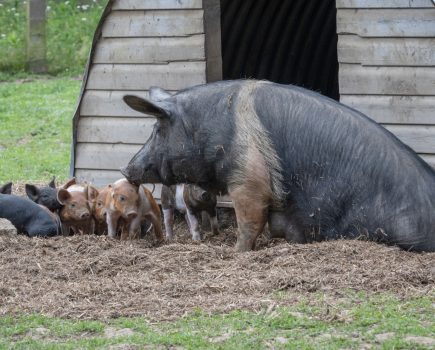Now is the time to start planning – and there is plenty to think about
If you’re aiming to have a go at making your own hay this year then now (i.e., the beginning of May) is the time to start planning. Think carefully when choosing which fields to set aside: Consider factors such as ease of access for machinery, shape (not too many awkward corners), whether they get enough sunshine (e.g., not overshadowed by large trees), slope, proximity to buildings for storage of the crop and also whether the grass species present are likely to give sufficient yield to make it worth all the hassle.
Livestock need to be excluded from the fields from early May, and this is also a good time to spread some fertiliser if required – plants need these essential nutrients for healthy growth, so any deficiencies in the soil must be made up by the use of artificial fertiliser or farmyard manure (but see note in box) if there’s to be any hope of obtaining a decent crop.
While the grass is still short, take the opportunity to walk the fields and mark any hazards (such as rocky projections or boggy areas) that might not be noticeable when the crop is fully grown. Also look out for, and remove, any stones or branches that might be lying about, having fallen from the boundary wall or hedge. Likewise, keep an eye open for trailing or broken wire from fences – if cut into short pieces by the mower and incorporated into bales of hay these represent a serious risk to livestock, cattle in particular.
If moles are a problem in the field then I’m afraid they’ll need to be dealt with, although I always feel rather mean about this as they’re such appealing little chaps! However, it’s a case of needs must. Mole hills in the crop will damage your machinery, and stones flung out by the mower could be the cause of injury to yourself or a bystander – I once had the back window of a tractor smashed while I was driving it! Also, the incorporation of soil in the finished crop can result in fatal outbreaks of listeriosis amongst the animals it’s fed too. Although this is most usually associated with silage (which is one of the reasons why many smallholders prefer to feed hay) it can occur in hay too.
Going over the field with a chain harrow will disperse any existing mole hills and also break up any dung pats left behind by the previous occupants of the field, and then you simply close the gate and wait for midsummer! However, don’t turn your back on it completely: Remain vigilant for ragwort growing amongst the crop, and hand weed it as soon as it’s seen. You might also want to spot treat any areas that are dominated by nettles, thistles or docks.







